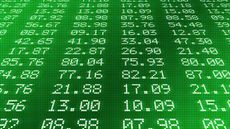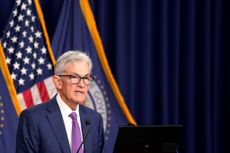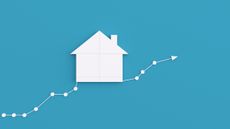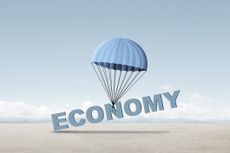Kiplinger Retail Outlook: Consumers Still Showing Strength
Consumer spending is still surprisingly strong as the holiday season nears.

Kiplinger’s Economic Outlooks are written by the staff of our weekly Kiplinger Letter and are unavailable elsewhere. Click here for a free issue of The Kiplinger Letter or to subscribe for the latest trends and forecasts from our highly experienced Kiplinger Letter team.
Retail sales rose a moderate 0.4% in September, and a stronger 0.7% if you exclude motor vehicles and gasoline. Those so-called core sales have risen at a moderate-to-strong pace in each of the past five months, indicating the resilience of consumer spending this year. Clothing, miscellaneous, and health and personal care stores also enjoyed a strong increase. E-commerce sales gained a smallish 0.4% after a strong August. Spending at restaurants surged 1.0%, their largest monthly gain in nearly a year. Consumer spending on eating out tends to reflect whether consumers are feeling pinched or not, so the pickup could indicate further gains in overall spending.
A few other store types showed weakness. Sales declined for the second month at electronics (-3.3%) and furniture (-1.4%) stores. The large, consecutive monthly declines at electronics stores are a puzzle.

Sign up for Kiplinger’s Free E-Newsletters
Profit and prosper with the best of expert advice on investing, taxes, retirement, personal finance and more - straight to your e-mail.
Profit and prosper with the best of expert advice - straight to your e-mail.
Motor vehicle sales were unchanged in September. Car purchases have downshifted this year, as much of the pent-up demand for new cars and trucks after the pandemic has been met, causing inventories to rise. High sticker prices may also be hurting sales.
Consumer spending on services excluding restaurants rose a moderate 0.4% in August, the latest month for which data are available. While spending on services is still rising at a good pace, it is below the strong average monthly increases of 0.7% logged from last September through March 2024, and the rate of monthly increase has been gradually decelerating. However, this more moderate pace is not likely to weaken further for now.
A gradually cooling labor market is likely causing consumers to think about boosting their savings. However, don’t expect any sudden pickup in the savings rate. That only occurs when unemployment rises sharply and consumers start worrying about losing their jobs. But savings rates have been lower than the historical norm and may begin to rise slowly, which would cut into the cash available to support future retail spending. Still-high interest rates on consumer loans will likely continue to dampen lower-income households’ spending power, too.
Related content
Get Kiplinger Today newsletter — free
Profit and prosper with the best of Kiplinger's advice on investing, taxes, retirement, personal finance and much more. Delivered daily. Enter your email in the box and click Sign Me Up.

David is both staff economist and reporter for The Kiplinger Letter, overseeing Kiplinger forecasts for the U.S. and world economies. Previously, he was senior principal economist in the Center for Forecasting and Modeling at IHS/GlobalInsight, and an economist in the Chief Economist's Office of the U.S. Department of Commerce. David has co-written weekly reports on economic conditions since 1992, and has forecasted GDP and its components since 1995, beating the Blue Chip Indicators forecasts two-thirds of the time. David is a Certified Business Economist as recognized by the National Association for Business Economics. He has two master's degrees and is ABD in economics from the University of North Carolina at Chapel Hill.
-
 Stock Market Today: Dow Jumps 1,500 points on Election Outcome
Stock Market Today: Dow Jumps 1,500 points on Election OutcomeThe removal of election uncertainty unleashed a powerful rally in equity markets.
By Dan Burrows Published
-
 Federal Reserve Meeting: Updates and Commentary
Federal Reserve Meeting: Updates and CommentaryKiplinger experts provide commentary and analysis on the November Federal Reserve meeting.
By Kiplinger Staff Last updated
-
 Start-ups Trying to (Profitably) Solve the World’s Hardest Problems
Start-ups Trying to (Profitably) Solve the World’s Hardest ProblemsThe Letter More investors are interested in companies working on breakthrough science to tackle huge societal challenges. The field of deep tech has major tailwinds, too.
By John Miley Published
-
 Will lower mortgage rates bring relief to the housing market?
Will lower mortgage rates bring relief to the housing market?The Kiplinger Letter As mortgage rates slowly come down here's what to expect in the housing market over the next year or so.
By Rodrigo Sermeño Published
-
 The Big Questions for AR’s Future
The Big Questions for AR’s FutureThe Letter As Meta shows off a flashy AR prototype, Microsoft quietly stops supporting its own AR headset. The two companies highlight the promise and peril of AR.
By John Miley Published
-
 China's Economy Faces Darkening Outlook
China's Economy Faces Darkening OutlookThe Letter What the slowdown in China means for U.S. businesses.
By Rodrigo Sermeño Published
-
 AI Start-ups Keep Scoring Huge Sums
AI Start-ups Keep Scoring Huge SumsThe Kiplinger Letter Investors continue to make bigger bets on artificial intelligence start-ups, even for small teams with no revenue. Some backers think a startling tech breakthrough is near.
By John Miley Published
-
 Should We Worry About the Slowing U.S. Economy
Should We Worry About the Slowing U.S. EconomyThe Letter With the labor market cooling off and financial markets turning jittery, just how healthy is the economy right now?
By David Payne Published
-
 New Phones Get All the Hype, but Consumers Still Love Old Models
New Phones Get All the Hype, but Consumers Still Love Old ModelsThe Letter Even as flashy artificial intelligence features drive sales of new smartphones, used phones continue to fetch big bucks as demand outstrips supply.
By John Miley Published
-
 Starlink's Internet Beamed From Space Is Taking Off
Starlink's Internet Beamed From Space Is Taking OffThe Kiplinger Letter Satellite broadband provider Starlink is taking over the space market. Amazon’s mega-constellation will soon join the fray, adding to the unprecedented disruption.
By John Miley Published